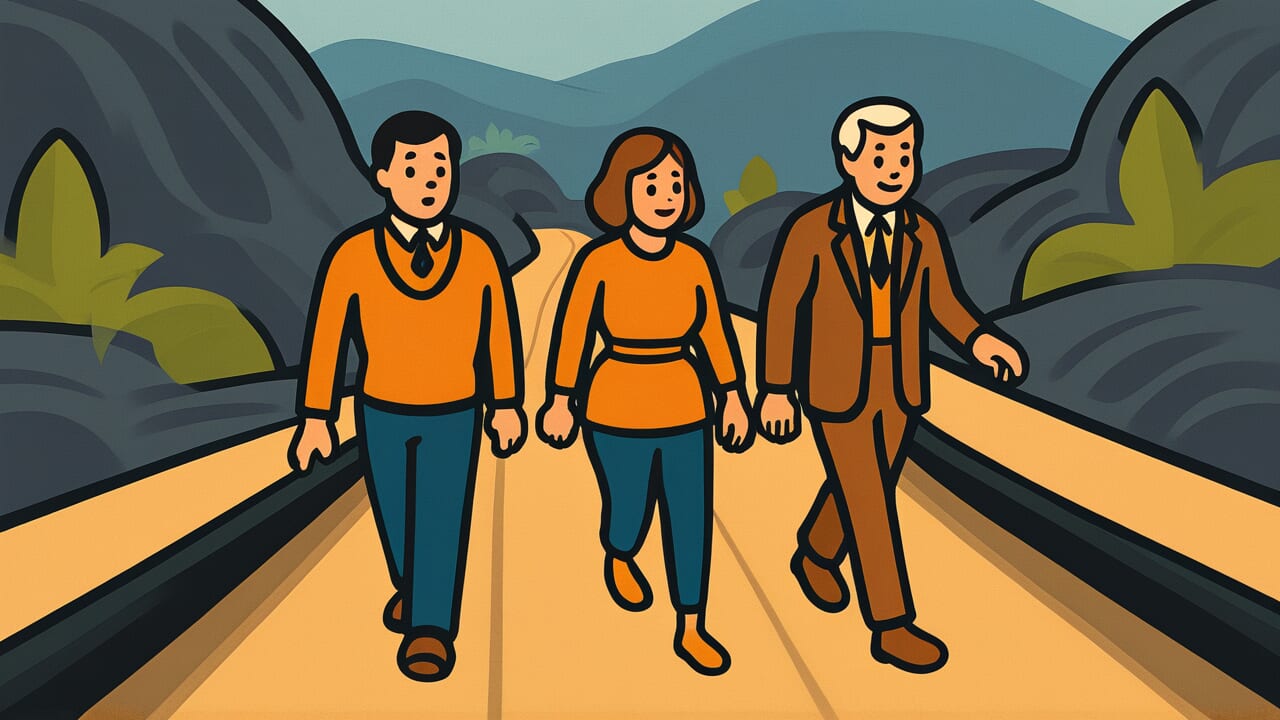How to Read “On the road to the underworld, there is no old or young”
Yomi no michi ni rōshō nashi
Meaning of “On the road to the underworld, there is no old or young”
“On the road to the underworld, there is no old or young” means that everyone is equal before death, regardless of age.
Being young doesn’t protect you from death. Being old doesn’t guarantee it will come soon. Death arrives without choosing based on age.
This proverb is used when talking about life’s impermanence. It warns people who are overconfident because they’re young.
People also use it when mourning someone who died young. It expresses how unfair death can seem.
The meaning hasn’t changed in modern times. Even with advanced medicine, young people sometimes die suddenly. Elderly people sometimes live very long lives.
Death remains unpredictable for everyone. Age offers no guarantee. This proverb teaches us to cherish each moment.
It reminds us not to postpone what we want to do.
Origin and Etymology
“On the road to the underworld, there is no old or young” likely emerged from Buddhist influence. “Yomi” refers to the world of the dead, the afterlife.
This concept has been deeply rooted in Japanese views of life and death for centuries.
The core of this expression lies in “there is no old or young.” On the road leading to Yomi, there are neither elderly nor young people.
Before the absolute reality of death, age distinctions mean nothing.
Buddhism teaches “birth, aging, sickness, and death” as fundamental human sufferings. Among these, death is something everyone must face.
When this philosophy reached Japan, it merged with Japanese views on life and death. This proverb likely emerged from that fusion.
In ancient Japan, many people died young. Average lifespans were short for long periods of history.
In that reality, people witnessed daily that death doesn’t choose by age. This proverb contains the lived experience of people from those times.
This phrase expresses death’s equality simply and directly. It contains the lesson that life is fleeting, and therefore we should live each moment fully.
Usage Examples
- I thought I was still safe because I’m young, but on the road to the underworld, there is no old or young, so I should be good to my parents now
- When I heard about my friend’s sudden death, I truly understood that on the road to the underworld, there is no old or young
Universal Wisdom
The universal truth in “On the road to the underworld, there is no old or young” warns against the illusion that we still have plenty of time.
We unconsciously believe enough time remains in our lives. When we’re young especially, death seems like a distant future event.
We think what we don’t do today can wait until tomorrow.
Throughout human history, death has always arrived without warning. In times of war, during epidemics, and even in peaceful modern times, death comes regardless of age.
This proverb has been passed down for hundreds of years because this truth never changes across time.
Interestingly, this proverb that confronts us with harsh reality also carries a message of hope.
Recognizing death’s equality makes us aware of life’s finite nature. This awareness increases the value of each moment.
When we think tomorrow will come, we become lazy. When we think tomorrow might not come, we try to live today with full effort.
Our ancestors conveyed this harsh yet gentle truth in simple words. Life is short, and death is equal.
Therefore, we should choose to live without regrets. This is the essential question about human existence contained here.
When AI Hears This
Living humans each hold different amounts of information. A 20-year-old has 20 years of experience and knowledge.
An 80-year-old has accumulated 80 years of memories and wisdom. In information theory, older people hold more bits and appear informationally superior.
On the time axis, there’s clear inequality.
But death erases all this information. It’s like a hard drive being physically destroyed. No matter how large the capacity, you can’t retrieve the contents once it’s destroyed.
Twenty gigabytes or two terabytes both become the same zero when erased.
In information theory, this state is called “maximum entropy.” Entropy measures disorder or uncertainty. When it reaches maximum, it means “a state where nothing is known.”
More interesting is that the timing of this information erasure is unpredictable. There’s probability that younger people get erased first, or that older people go first.
The probability distribution doesn’t perfectly correlate with age. The law that more accumulated information means longer preservation doesn’t hold.
This is an extremely rare phenomenon in nature.
This proverb recognized the fragility of information storage in living systems over 2,000 years ago.
The temporal advantage of age offers no guarantee before irreversible information loss.
Lessons for Today
This proverb teaches modern people how to prioritize in life. Every day, we postpone various things, thinking “I’ll do it someday.”
Expressing gratitude to important people. Taking a step toward our dreams. Spending time on what we truly want to do.
All these rest on the assumption that “we still have time.”
“On the road to the underworld, there is no old or young” teaches us that this assumption is an illusion. There’s no guarantee tomorrow will come.
That’s why we need to cherish today.
This doesn’t mean living in a rush. Rather, it means identifying what truly matters and dedicating our time and energy to it.
Instead of wasting time on social media, spend time talking with family. Start that hobby you’ve been thinking about “someday” today.
If you have words to say, say them now.
This proverb teaches the harsh reality of life’s finite nature. At the same time, it conveys the preciousness of living each moment fully.
Your life is built from the accumulation of each present moment.



Comments